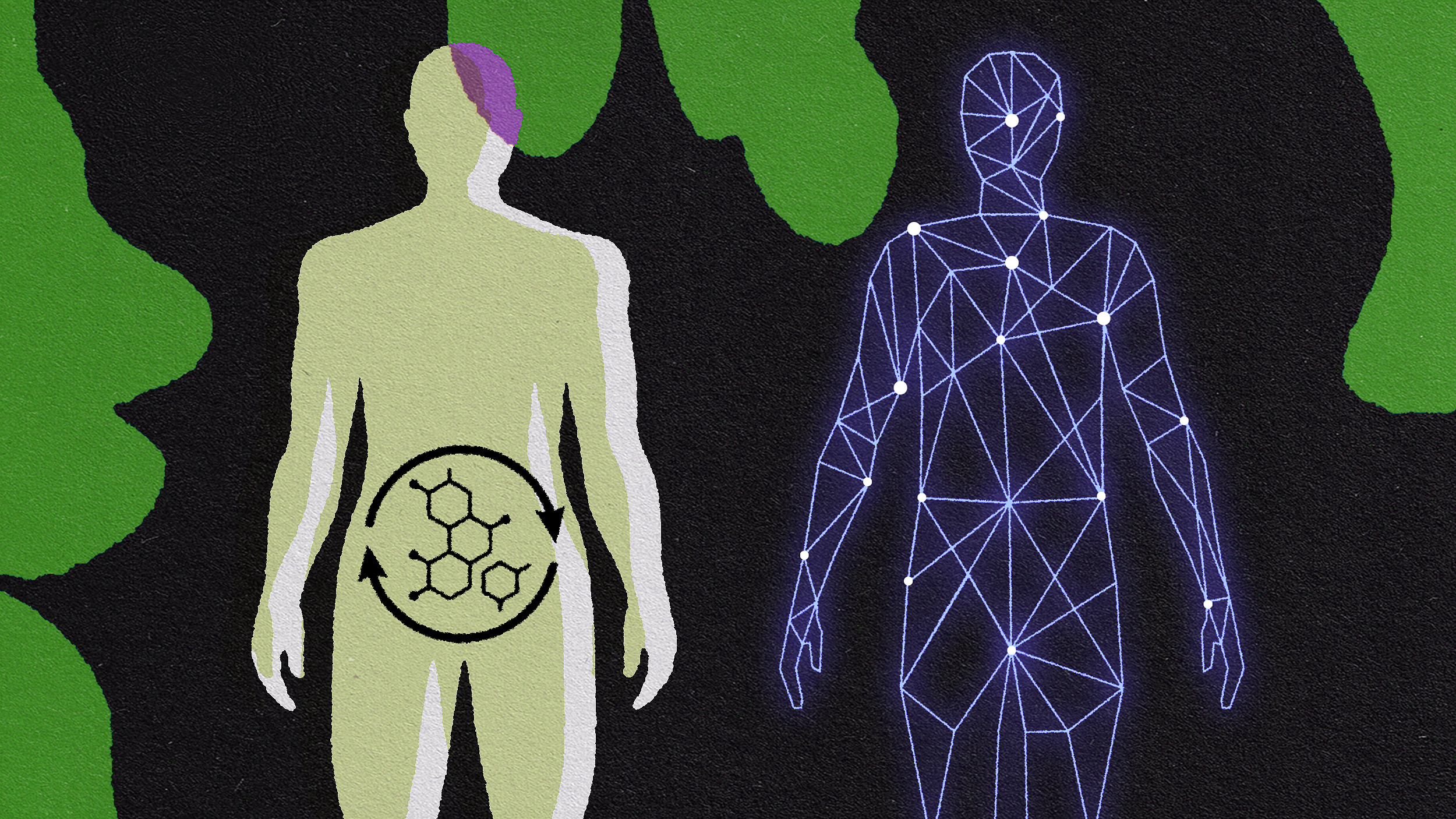When you see an orgasm depicted in TV, film, or even porn, you can be virtually certain it was faked. This can feed misconceptions about there being a “correct” way to orgasm.
In reality, orgasms are complex phenomena that can result from a wide range of stimuli, and they are orchestrated primarily by the brain, not the genitals.
Sex educator Emily Nagoski emphasizes the importance of familiarizing yourself with the full spectrum of pleasurable and arousing experiences, not just orgasms. Additionally, shifting focus from orgasms to overall pleasure can alleviate pressure, potentially leading to improved sexual experiences and, paradoxically, better orgasms.
EMILY NAGOSKI: Unfortunately, virtually all of the orgasms that are available to us in the mainstream media and in porn are fake. The classic example, of course, is "When Harry Met Sally," Meg Ryan.
MEG RYAN: 'Yes, yes, yes!'
EMILY NAGOSKI: Actually, what orgasm looks and sounds and feels like varies tremendously from person to person. But how do we learn about orgasm? We learn it from media, and we learn it from porn, and then we think we are doing it wrong if that's not what our orgasm is like. And we're not, we're doing it right, we're just not doing it the way we were told. And if other people have a problem with the way our orgasms actually are, those are not the people you have sex with. So the first thing we should talk about is what an orgasm actually is. Then we should talk about how they actually happen. Followed, of course, by why they sometimes don't. And then at the end, I'll give you some tips to have the biggest, most expansive orgasm you've had in your life.
I think people believe that orgasm is a genital function. It is not. Sometimes genitals are involved, but orgasm is something that happens in the brain. And there is a reliable neurological marker for when orgasm happens. And it depends how you measure it. If you measure it one way, at orgasm, the prefrontal cortex goes dark- all of the inhibitory impulses just vanish. In a different kind of machine, the brain lights up everywhere. It's a whole brain response, orgasm. You have to have a brain to have an orgasm. How we experience an orgasm as pleasurable or not depends on the context in which we're experiencing it. So when you have a great, sex-positive context, orgasm can feel really good. But for some people, they might have an orgasm during unwanted sex. In that case, the orgasm feels like a betrayal, like their body has done something wrong and they feel broken.
So what orgasm actually is, here's the definition I use: "It is the spontaneous involuntary release of neuromuscular tension generated in response to sex-related stimuli." People can have orgasms from having their toes sucked. People can have orgasms from having their ear lobe sucked. People can have orgasms through breath and imagination. The only measure of an orgasm is whether or not you wanted and liked it. If you wanted and liked it, then it doesn't matter what kind of stimulation got you there. Whatever works for you, is what works for you.
So we can't even necessarily differentiate between which organ in your body is causing the orgasm to happen. There's only one: There's a brain orgasm. We can really struggle around an issue like orgasm, which seems so simple, but we're taught that our identities are tied to our ability to have orgasms. One of the common experiences for people who struggle with orgasm is this thing that sex therapists call "spectatoring." Where instead of enjoying the sensations that are happening in your body, you're sort of watching your body; and worrying about it and thinking about is your face okay, should you be bending your spine in that direction? And all of that worry about your body is just keeping the brakes on and making it more difficult for you to enjoy the sex you are having.
Charles Carver, the researcher in Florida who, with his colleagues, developed this mechanism called 'Criterion velocity and the discrepancy-reducing increasing feedback loop.' I just call it "the little monitor." And it's as if there is a little monitor in your brain that knows what your goal is. It keeps track of how much effort you put in toward that goal, and it notices how much progress you're making toward that goal. And it has a strong opinion about the ratio of effort to progress. When your little monitor switches its assessment of your goal from being attainable to being unattainable, it pushes you off an emotional cliff from frustrated rage down into a pit of despair.
The ironic intervention when you're struggling with orgasm is take orgasm entirely off the table for a long time, months at a time, and just explore your erotic landscape: experience high levels of arousal, and lower levels of arousal, and feel what it feels like to approach orgasm knowing that you are not going to have one. The reason we take away the goal entirely is to help the monitor relax. Are you achieving your goal? If your goal is pleasure, and your little monitor is like "Pleasure: check!" your monitor is released from the necessity of judging you and trying to motivate you to work harder. Working harder to have an orgasm is rarely the thing that's gonna get people where they wanna go. And if people struggle too long and they feel like there's something wrong with them and they're broken, they absolutely find themselves in a pit of despair. And if you're feeling in a dark place because there's something wrong with your orgasms: connection with other people, connection is the most important antidote to the darkness. The only measure of an orgasm is whether or not you wanted and liked it. If you practice experiencing pleasure without making it goal-oriented or trying to achieve orgasm, but rather just to experience all the pleasurable sensations your body is capable of, you win every time.
So here's an exercise that helps you to expand your orgasms: Anyone with any set of genitals of any gender identity can practice this. You can do it alone or with a partner. This takes about an hour, generally, and it takes a lot of practice. You gotta choose how you spend your time. You could do this or you could just like watch Netflix. It is not necessary in order to be a sexually-well person by any means; it is the equivalent of running a marathon. Nobody needs to do it, but if you need a hobby, I recommend this one. Versions of this are part of tantric meditations where they use Kundalini breathing in order to access different spiritual states, but ultimately, it's about the physiology of how orgasm tension generates and dissipates. And when you can get to a place where as much tension is coming in as is going out at the same time, it's like every cell in your body is resonating at the same rhythm, like you're a bell that's ringing. You're gonna notice some things about this practice that will probably remind you of mindfulness or other forms of meditation, especially breath meditation.
I'm gonna ask you to pay attention to the sensations that are happening in your body. And that comes really easily to some people, and for others, it is quite difficult. They get distracted, and that's fine. Like a mindfulness practice, if you notice other distracting thoughts come along, and maybe it's a thought about body self-criticism, maybe it's a thought about the past, just, "Hello, distracting thought. I'm gonna put you on a shelf right now, and I'm gonna turn my attention back to the sensations that are happening all over my body."
Every orgasm is different from every other orgasm, but there are some strategies that work for a lot of people to move in the direction of having quite an enormous orgasm. You imagine arousal from like zero, not at all aroused to 10, currently having an orgasm. You stimulate yourself in whatever way works for you up to about a five, and then you allow that arousal to dissipate. You let yourself get back down to a one. So a one just feels like just barely any attention drifting toward orgasm. And then you stimulate yourself back up to a six, right? This is still a middle level of arousal. You're not very aroused, you're nowhere near orgasm. And then you allow your arousal to drift back down to a two and then you stimulate yourself back up to a seven. And if you are at the beginning of this process, you're gonna be learning what seven feels like versus a three, which you're gonna let your arousal drift back down to a three, and then you're going up to an eight. And at eight, you're real aroused. You might see the orgasm train coming to the station. It's not there yet, but you can hear it- there's a whistle. And then you allow your arousal to drift back down to a four or a five. And then you go up to an eight and a half, go back down to a six. And up to a nine.
Now when you get to a nine, the orgasm train is pulling into the station and the doors are opening and you would like to get on, but you're gonna put active effort into allowing your arousal to dissipate. Remember, it's neurophysiological tension, so you're just going to allow the tension. You're literally going to breathe and soften all the muscles of your body because as you get to that eight, eight and a half, nine level of arousal, you're gonna begin to experience carpal pedal spasms, carpal like carpal tunnel syndrome. Your hands are gonna clutch and your feet are gonna point and your ankles. And that's involuntary. And you're gonna make a voluntary choice to soften all of your muscles and let your arousal go back down to a seven, which is a high level of arousal but it's not an eight or a nine. And you go back up to a nine and a half. Now at a nine and a half, you've got one foot on the train and it might feel like it's pulling outta the station. And you know what? If the train pulls outta the station while you're on the orgasm train, "Oh dear, you had an orgasm." That's not failure, right? But, if you can, you keep your foot off the orgasm train and you go back down to an eight, nine and three quarters and an eight and a half, and a 9.85 where you are really close like you can feel the orgasm right there. And you're gonna soften all the muscles in your body from your core out to the periphery. And at this point, you are oscillating right at the peak of where orgasm is. And if you can maintain a balance of tension generation and tension relaxation, you can stay in that state and sustain it indefinitely.
NARRATOR: Get smarter, faster, with videos from the world's biggest thinkers. To learn even more from the world's biggest thinkers, get Big Think+ for your business.







